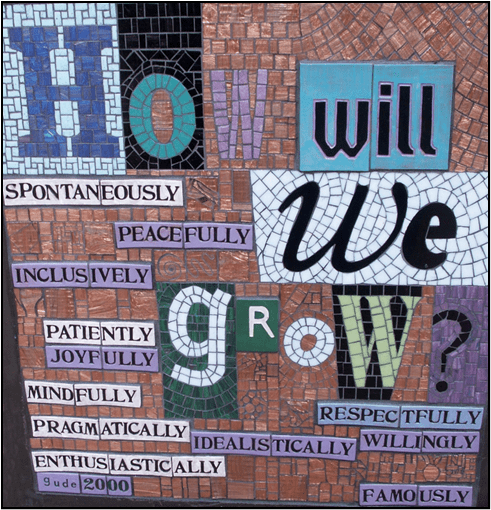If th
When a distressed community rebounds, we happily hand the credit to the residents and local groups who did the hard work on the ground. Yield the spotlight and cheer from the wings—that’s our motto.
But I recently learned that a little professional bragging can be a very good thing when it positions us to carry out our mission even more effectively. This is the story of how $10,000 and some creative publicity helped our Greater Cincinnati & Northern Kentucky LISC office attract new funders, raise our profile in the region and bring more resources to the neighborhoods we are committed to help.
It started with a local community development initiative we oversee called Place Matters, built on the idea that affordable housing alone won’t revive a neighborhood. It takes safe streets, grocery stores, better schools, and jobs.
That means everybody in the community—police, teachers, neighbors, businesses—have to be on the same page working toward collective impact. It also means we have to measure success so we know what’s working and how well.
If crime is a problem, for example, we take a baseline measure, employ some strategies and track the progress. To understand if children are poised for success, we measure kindergarten readiness.
Because we do a thorough job of monitoring our Place Matters neighborhoods, we knew we were seeing positive results. The problem was, we weren’t telling anybody about them. Our funders wanted to know: what’s the good news? We could hardly blame them. Who wants to pour money into a project with no idea of how well it’s working?
So with $10,000 of funding dedicated toward communications, we decided to tell some stories.
Let me be the first to say I didn’t know anything about mass communications and we couldn’t afford to hire somebody who did. We took a look around at what other LISC offices had done and decided to launch a monthly e-newsletter. We hired a part-time writer from Cincinnati Magazine and started putting together a data base of people we thought should know more about us—city officials, state representatives, donors, bankers and key community stakeholders.
Then we put out the word to our Place Matters communities, asking them to tell us what was working. Soon we were hearing about Troy Thomas, who came out of prison with nowhere to turn until a Place Matters-funded program taught him Landscaping 101 and he found a job. We heard about Suzanne Ruth, the mother of two who lost her job and nearly her home until a Financial Opportunity Center, supported by LISC, helped her not only find a job, but manage the money she earned.
We sent our writer out to interview and a photographer to take some pictures, kept the stories short and snappy and emailed them off to our “readership,” asking them to please forward them on.
It dawned on us that we didn’t have to generate all this good news ourselves. We started forwarding positive articles about our neighborhoods from our local press. When the Cincinnati Enquirer featured prominently the transformation of Avondale, one of our most challenged Place Matters communities, we sent our readers the link with a note: “LISC and the Place Matters funders are proud to be playing a major role in Avondale’s ongoing renaissance. Here’s to the beginning of another bright year!”
And when Avondale landed a $29 million HUD grant for housing development and revitalization, that made the papers, too, in an article that never mentioned the role of LISC. No matter. We sent out the link with a message: “We want to congratulate Avondale on their successful grant.”
We didn’t take the credit, but people from all over came up to me to congratulate us. It was valid praise because without our help, Avondale could not have built the team even to apply for the HUD grant.
That really taught me the beauty of communicating with people and the value of sending out the good news that happens in any of our communities—whether or not we had a hand in it. Every positive word written tells the world that other agencies and groups find our neighborhoods important enough to talk about and important enough to invest in. It’s a way of letting investors know our neighborhoods are a good bet.
We have been sending out these stories and e-letters for a year now and the results have frankly surprised me. Place Matters secured two new donors with more on deck. Our circulation list is 1,000 and growing. LISC is out of the shadows and on the map. In this budget round, our funders gave us an extra $10,000 to start making neighborhood videos.
So I guess we broadened our mission from convener to town crier. We walk a fine line at LISC because we don’t want to take the spotlight away from our neighborhoods and partners. But the behind-the-scenes work we do—organizing, seeding and introducing people who share a stake in their community—makes rebirth possible.
When we drop our modesty and let our successes be known, the bottom line is greater credibility and more money. People trust us. They come to us with new ideas. All good news for our neighborhoods.
Isn’t that what it’s all about?
(Photo courtesy of LISC)






Comments